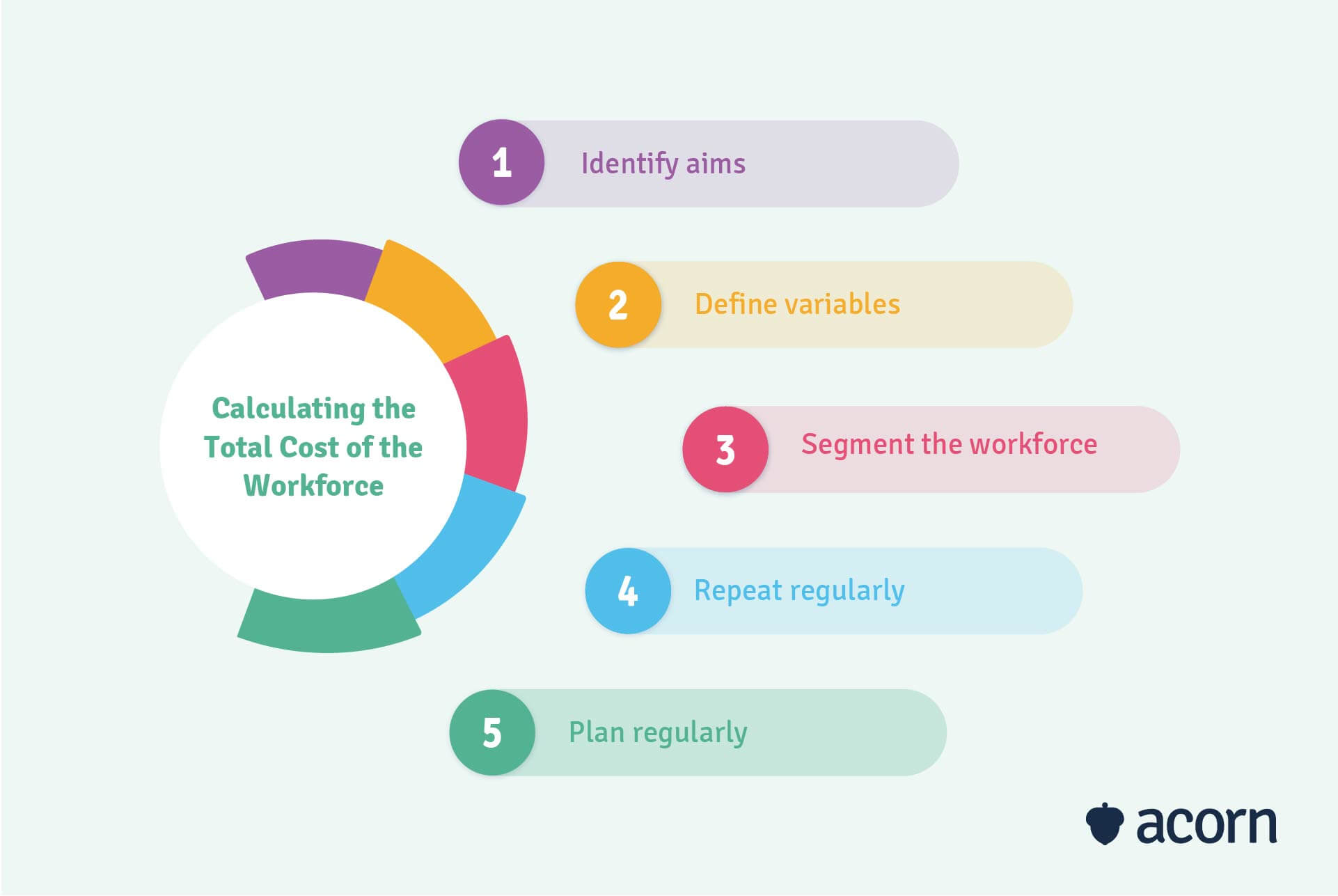The Total Cost of the Workforce: Best Practices and Why it’s Important
Reading Time:

Lead the pack with the latest in strategic L&D every month— straight to your inbox.
SubscribeTackling the total cost of the workforce is key to understanding what makes your organisation tick, but where do you start
At this point, one thing you’ve probably heard about workforce planning is this: It’s all about getting the right people in the right jobs at the right time for the right cost.
What you might not have heard is what the right cost really is, or how you calculate it. This is where the total cost of workforce comes in. In this article, we’ll talk about what benefits of understanding the total cost of workforce are as well as the best practices for calculating it.
What is the total cost of the workforce?
The total cost of workforce (TCOW) is the overall amount of money an organisation spends on its workforce, from compensation and benefits to recruiting and training and development. TCOW allows management to clearly see the extent of workforce and labour expenditure.
The components of TCOW
Workforce costs can generally be categorised into three groups:
- Total rewards
- Employer costs for labour
- Workforce overhead.
Total rewards
The total rewards include all compensation costs paid to employees, such as direct compensation and benefits. Direct compensation includes base pay (salaries), supplemental pay (overtime), variable pay (bonuses) and long-term incentives. Benefits include health benefits (medical, insurance), personal benefits (tuition, wellness perks, retirement savings) and pay for time not worked (paid leave).
Employer costs for labour
Here, we’re referring to the total sum of costs that go towards managing a workforce. This can include expenses such as taxes, employer insurance and workers compensation. You also need to consider your flexible workforce under this category, such as freelancers, contractors, temporary staff and consultants.
Workforce overhead
Overhead is the ongoing business expenses that aren’t directly connected to the creation and delivery of a product or service. Along these lines, workforce overhead refers to indirect costs such as recruitment, training, onboarding and facilities.
Why the total cost of workforce is important
For most businesses, labour is the biggest expense at nearly 70% of all operating costs. It goes without saying that TCOW, being such a large expense, is an essential element of workforce planning.
But knowing that your workforce cost is hard to maintain is one thing. You need to consider those costs broken down into smaller components, because looking at the total cost of workforce on its own is detrimental in the long run.
You need to understand what all the moving parts are that make the total workforce costs what they are and why. The true value of TCOW lies in the ability to use it to evaluate your business options in order to make your workforce more efficient and positively impact your organisation.
Not measuring your TCOW leads to overstaffing, understaffing, and ineffciently-allocated resources, all of which make it difficult for your business to carry out and complete its mission. It also means you won’t understand your optimal spend—are you paying too much or too little on professional development for your employees? Are you spending in areas and initiatives that improve business performance and growth?
These questions are why we created the first performance learning management system (PLMS) here at Acorn. It’s a dynamic AI-powered platform that synchronises learning and development (L&D) experiences to business performance, giving insight into how efficent your workforce spend is.
Best practices to calculate the total cost of workforce
So, now that you know why TCOW is important to your business, you want to know the most effective way to calculate it. Let’s jump into best practices when it comes to calculating the total cost of workforce.

Identify aims
The first step to getting your total cost of workforce calculation underway is identifying what your aims are. You need to ask yourself what you want to solve, what you want to know, and how you’re going to use the information you find. It’s important to ensure you know how you’re going to use the data you’ve collected to meet your business’s strategic plans so you can avoid falling into some of the pitfalls of bad workforce analytics.
Define variables
Once you know what you aim to get out of your TCOW analysis, you can begin defining the variables that will give you better insight into what your workforce costs are and why.
If all you do is look at the base salary of your workforce, then all you will know is the base salary of your workforce. Adding in other factors like recruitment, onboarding and training costs increases data accuracy, painting a clearer picture for you. Perhaps paying a higher salary means you have lower turnover, which in turn keeps your recruitment and onboarding costs down. It’s all about finding the relationship between costs and variables and using it to find the most efficient way to run your business.
Segment the workforce
Whether you’re new to the total cost of workforce metric or well-versed in it, calculating TCOW can be an overwhelming task. The workforce is 70% of an organisation’s expenses, so it’s no wonder that TCOW is a massive undertaking. This is why it can be easier to start small with your analysis. Confine your aims to one single question you want to answer, or focus your analysis on a small segment of the workforce with more definable factors.
Repeat regularly
Just as with workforce planning, TCOW has to be measured and re-measured constantly. The environment your workforce operates within is going to change over time, the demand for labour will change over time, and the expectations of your workforce and potential future workforce will change over time. You need to make sure you can stay on top of these shifts in the market by re-analysing your TCOW metric frequently. Not only will this help you with adjusting to current changes in the market, but it will also help you identify trends in the data as you accumulate records of your organisation’s past performance, allowing you to plan for the future.
Plan regularly
It’s important that your organisation is able to respond to unexpected changes quickly in the moment. But it’s perhaps even more important to plan for likely futures to reduce the whiplash that comes with reactive measures. Your organisation’s historical TCOW data (once you have it) will highlight trends and patterns in the workforce which you can use to predict outcomes and plan for the future.
Key takeaways
Understanding your organisation’s biggest expense is certainly a monumental task, covering a vast range of different factors. But understanding what factors contribute to TCOW and how they affect your organisation overall pays big dividends, giving you the detailed and accurate understanding you need to take actions to meet your strategic goals.